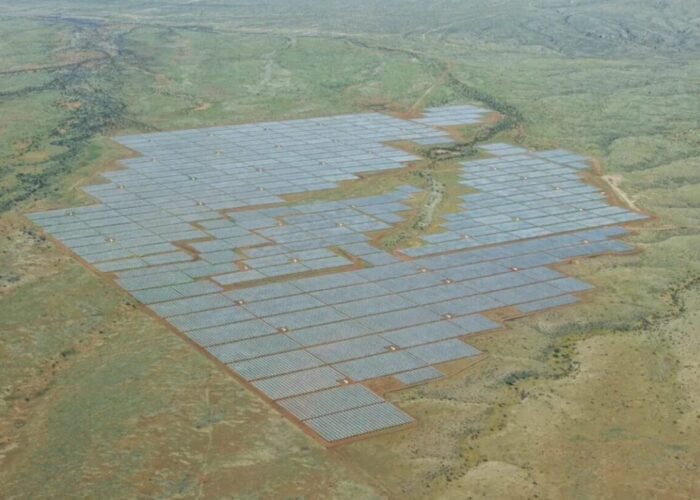
The global solar sector is growing at a prodigious rate, bringing considerable optimism about the industry’s long- and short-term future. Last year, the world’s installed capacity increased by a mammoth 87% year-on-year, and the leading markets of China, the US and India have all reported impressive growth figures in the last 12 months.
However, larger projects that require greater investment to commission bring with them increased risks, as developers have more variables to manage to bring each project to commercial operation. These range from financial risks for the deployment of new technologies in new environments to risks associated with weather, climate and physical geography. Inadequate management of these risks can impact both a project’s bottom line and the broader push towards a net zero world.
Unlock unlimited access for 12 whole months of distinctive global analysis
Photovoltaics International is now included.
- Regular insight and analysis of the industry’s biggest developments
- In-depth interviews with the industry’s leading figures
- Unlimited digital access to the PV Tech Power journal catalogue
- Unlimited digital access to the Photovoltaics International journal catalogue
- Access to more than 1,000 technical papers
- Discounts on Solar Media’s portfolio of events, in-person and virtual
One response to this considerable complexity in the solar sector is to rely on an equally considerable supply of data and information that can be quickly updated and readily shared between decision-makers, from investors and independent power producers (IPPs) to developers and operators. This week, US software company Anza launched a new module database for the US solar sector, which it hopes will improve the depth and breadth of information available to decision-makers in the solar sector, and help minimise some of the industry’s growing risks.
A database for US solar
“We’ve put together the most comprehensive database on solar module products and the solar module supply chain in the industry,” begins Anza CEO Mike Hall, who spoke with PV Tech Premium this week. “We think it’s tremendously valuable to developers and IPPs who need access to information about products and want to be able to compare these products holistically.”
Hall notes that the database consists of product specification sheets and performance reports, as it looks to provide a wealth of information regarding modules currently available in the US. This information is willingly provided by module manufacturers—and frequently updated as new products hit the market—to provide information that is as up-to-date as possible in a sector noted for the rapid rate of technological innovation.
Earlier this year, experts from the Clean Energy Associates (CEA) wrote for PV Tech that the industry is in the midst of a shift from using passivated emitter rear contact (PERC) cells to tunnel oxide passivated contact (TOPCon) technology due to the higher power conversion efficiency figures and lower levelised cost of electricity (LCOE) associated with the newer technology. Looking ahead, Quanwei SolarTechnology’s Chu Yifan told PV Tech that the heterojunction technology (HJT) market could rival the size of the TOPCon sector by the end of this year as the industry looks to move to the next great technological innovation.
“One way that our platform is valuable is that buyers generally know that HJT is more efficient, and there’s some value to that efficiency, but it’s really difficult to quantify exactly how much [that efficiency] is worth without a technology like that which Anza provides,” explains Hall, highlighting the importance of quantifying these technological innovations, and interpreting them in terms of financial gains and losses.
He goes on to explain Anza’s use of an ‘effective dollar-per-watt’ metric—a formula that generates a single number for each solar module to give an impression of its overall financial efficiency—to help buyers make more informed decisions.
“The effective dollar-per-watt is a way for users to see in one number how price, production and installation costs come together,” says Hall. “It’s the only metric that I’m aware of that takes into account all three key financial parameters. By putting it into a dollar-per-watt [figure], it allows users to compare all the modules, apples-to-apples, taking into account all three things.”
Managing risk in the US
Being able to assess the features of a module and maximise its financial gains for a project is critical in a sector that is increasingly aware of the risks inherent to its operation. Figures from US analyst kWh Analytics suggest that, due to inaccurate modelling processes, the solar sector has underestimated financial losses due to physical damage by over 300%, and more accurately assessing and managing risks like these are crucial for the long-term financial health of the sector.
To tackle this, Anza’s platform includes supply chain data alongside module specifications, including where the products are being manufactured, where components are coming from, and risk assessments pertaining to two key pieces of legislation affecting the US solar sector: the Uyghur Forced Labor Prevention Act (UFLPA) and the antidumping and countervailing duty (AD/CVD).
When asked about the factors affecting risk perception in the US, Hall replied that “trade issues” are a primary concern.
“That’s anything that has to do with tariff duties or delay or products getting through customs,” says Hall. “Those are generally in two categories: the UFLPA, which has to do with customs vetting that the modules don’t have any content that comes from forced labour. We have a risk rating that we place on the modules relating to UFLPA.
“And then AD/CVD. It’s a hot topic in the US as we’re on our third round; the Commerce Department made a determination around countervailing, and so in our database, we’re tracking data relating to that. We apply a risk rating to that as well.”
These risks are amplified by the technical requirements of solar products, which rely on sourcing materials from a range of manufacturers. The US has sought to expand its module production capacity in recent years to reduce its reliance on Chinese imports, and the CEA expects its module capacity to reach 60GW by the end of the decade. This compares to just 12GW of cell-production capacity, raising the prospect of manufacturers building modules in the US but still relying on imported Chinese cells, making products more expensive and exposing companies to supply chain risks.
‘Refreshing and updating’
However, by using more data in the sector—in an attempt to minimise risks associated with project development—could expose the solar industry to a separate kind of risk. Earlier this year, PVcase’s David Trainavicius told PV Tech Premium that the sector’s desire to incorporate data, but a lack of expertise in collecting, cleaning and analysing data, exposes companies to so-called “data risk”.
“It’s something that we work really hard at to minimise,” says Hall, when asked about the threat of data risk. “But it’s not something that you can eliminate. We track our data coverage, and we’re at about 98% data coverage; what that means is that for the data field for the products we cover, we have 98% of that data.
“What we’ve done is that for every data field in the platform, we have a data standard; there’s a standard with regard to what diligence needs to be done for that data field. We do testing to see if it deviates too far from norms, and then there’s a timeliness aspect to it. It doesn’t mean you can get to perfection, but it does reduce the frequency of data errors and data issues.”
As is the case with more established forms of risk, data risk is a threat that can never be fully eliminated, but can be understood and managed. By noting how recent a dataset is or where it comes from, Anza’s platform looks to be as clear as possible with users and allow them to make their own decisions about the pitfalls of using this information.
Regarding the timeliness of data, Hall adds that there is no ‘expiry date’ on the information on Anza’s database; data will not simply be removed once a certain amount of time passes.
“We don’t end up having to take a lot [of data] down,” says Hall. “What ends up happening, usually, is that there’s a new product, and the old product will stay [on the database], but its availability will go to zero. Usually we’re seeing before data times out is that there is a new product and the manufacturer will say ‘that data is locked on that old product, but we have limited or no availability of it.’
“It’s more about refreshing and updating.”






